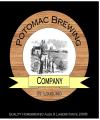
help needed
#1

Posted 01 February 2010 - 06:37 PM
#2

Posted 01 February 2010 - 07:23 PM
#3

Posted 01 February 2010 - 07:31 PM
#4

Posted 01 February 2010 - 07:32 PM
#5

Posted 01 February 2010 - 07:36 PM
#6

Posted 02 February 2010 - 06:51 AM
#7

Posted 02 February 2010 - 07:12 AM
#8

Posted 02 February 2010 - 08:01 AM
#9

Posted 02 February 2010 - 08:25 AM
#10

Posted 02 February 2010 - 03:48 PM
#11

Posted 02 February 2010 - 03:48 PM
So where to start. It all really depends on how much he wants to start with. It becomes quite the expensive little hobby, I have spent plenty on equipment over the last few years. The kit that Lora got me was called Mr. Beer. Basically it was a small little kit with crappy equipment that used crappy ingredients and left you with sub par beer.Mr. Beer KitThe good thing about that kit is that it is beyond simple and it gets you to learn the process of brewing beer. It is also a 2.5 gallon fermenter rather than a 5 gallon so it takes up less space. This would be an idea if all he wants is to understand the process first to see if he wants to get into it or not.An absolute must is this book:How to BrewThis is basically the homebrewers bible. He will learn everything about it from this book.For equipment we'll first have to know if he has a big enough kettle yet. For 5 gallon batches he'll need a minimum of a 24 quart stock pot, either aluminum or stainless steel. I found my turkey fryer/pot combo on ebay for around 50 dollars. It is easier to brew outside on a turkey fryer hooked to propane rather than an electric stove. An electric stove will take a long time to heat up the liquid and does not achieve a rolling boil well enough. However he can choose to go smaller and add more water at the end to get to his target amount. Most of the next equipment can be found in starter kits that some homebrew shops compile. A very good homebrew shop that I have purchased from before is actually located in Austin. Here is the link:https://www.austinhomebrew.com/You may want to send Kathryn out there so she can talk to one of the guys there to see what all would be needed for their specific living quarters. Also this place would be a great resource to him for any questions he may have.The start kit that I would recommend is this one:Starter KitYou do not have to get the secondary fermentation vessel but it would be helpful if he chooses to get into it like me. For the first few batches though I would say skip the secondary fermentation vessel and just get him a bottling bucket with a spigot. That will give him almost everything he needs (equipment wise) to make his first batch.Other things he will need:BottlesKettleFunnel with strainerIngredient kitAustin homebrew also has a lot of ingredient kits that come prepackaged with everything he needs for a first batch. You can have Kathryn find out his favorite kind of beer and then ask for a kit for that style of beer. He will want to start out brewing with extract. These kits will give him a liquid malt extract rather than extracting the sugars from the grain directly as I do.It is a really hard to know what exactly he will need. It all depends on how much he wants to get into it or feels comfortable with starting out. You may want to get him that book so that he can read it before diving in and then maybe get him a gift certificate to Austin Homebrew supply.Or you could always start him out with the Mr. Beer kit like Lora did with me, it did give me an understanding of how the process works. What it also did was leave me wanting to be able to make better beer so now I have all the equipment that i have.Sorry if this sounds like a different language to you, its a hard topic to explain b/c there are a lot of bits and pieces that are needed for different steps in the process.Let me know if you need more help
#12

Posted 03 February 2010 - 09:10 AM
We should modify this a bit so that its a bit more "generic" as to location and post it in the FAQ section so we can refer those inquiring about homebrewing to it. Maybe even just start an FAQ thread with advice that we all would post in getting started.Here's a letter I sent to my GFs Mom about getting the GFs brother in-law into beer making:
#13

Posted 03 February 2010 - 09:20 AM
#14

Posted 03 February 2010 - 09:23 AM
#16

Posted 04 February 2010 - 09:00 AM
Really??? I've used both and I've got to admit I like the wing capper better. Yes, the bench capper can handle Euro bottles (i.e. Stella and Heini if you are so inclined to bottle in green, WHICH is better to do when you are taking brew to a party and people don't understand the sanctity of bottles), but it is big, clunky, cumbersome and dare I say, more expensive? My buddy bought one when he fermented some wine, so I've used it... I don't think it's "all that".Get a bench capper instead of the wing capper.
#17

Posted 04 February 2010 - 09:09 AM
yeah - no problems with my wing capper here.Really??? I've used both and I've got to admit I like the wing capper better. Yes, the bench capper can handle Euro bottles (i.e. Stella and Heini if you are so inclined to bottle in green, WHICH is better to do when you are taking brew to a party and people don't understand the sanctity of bottles), but it is big, clunky, cumbersome and dare I say, more expensive? My buddy bought one when he fermented some wine, so I've used it... I don't think it's "all that".
#18

Posted 04 February 2010 - 09:36 AM
I scanned the videos and they look pretty good. Pictures are so much better than words for learning. I'll be sure to review these in detail when I get time and will pass them on to newbies. Thanks for the linkHere is a good set of videos on brewing an extract batch of beer. My linkOnly thing I would really change is the capper. Get a bench capper instead of the wing capper.
0 user(s) are reading this topic
0 members, 0 guests, 0 anonymous users













